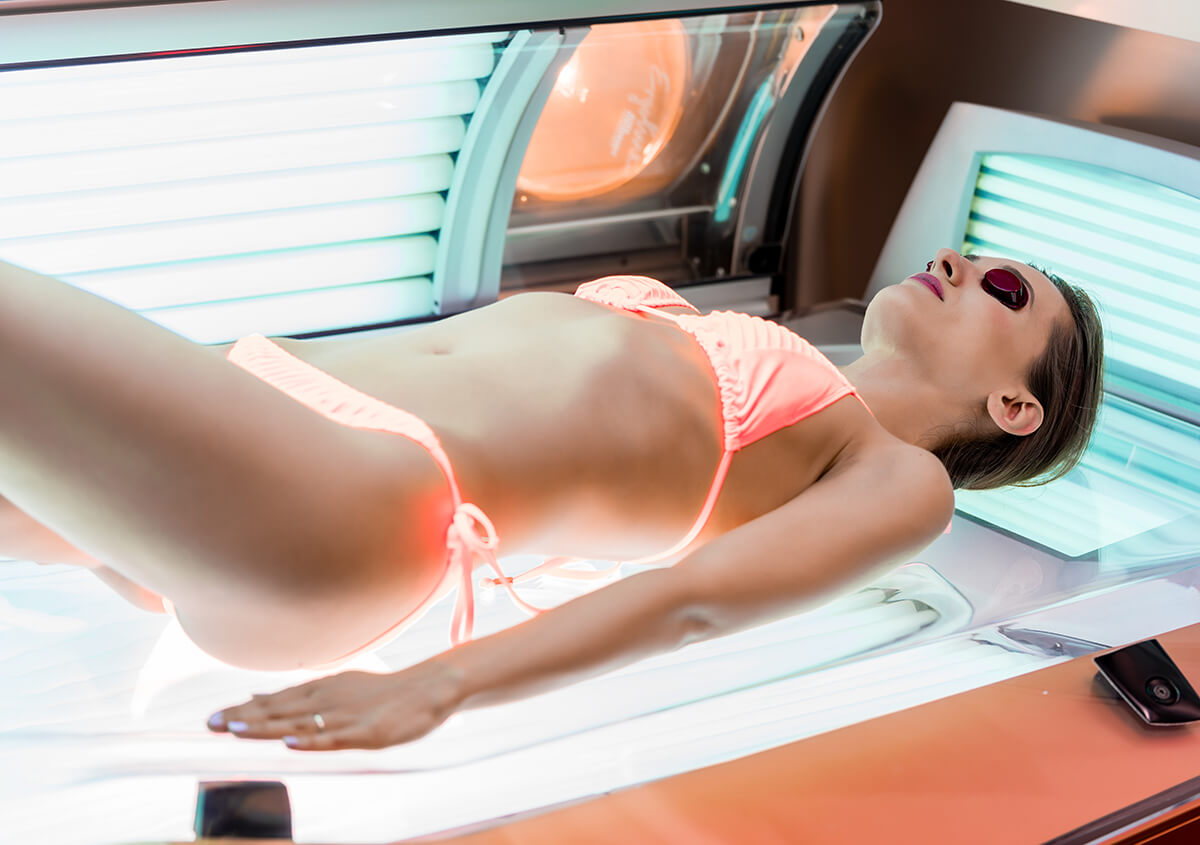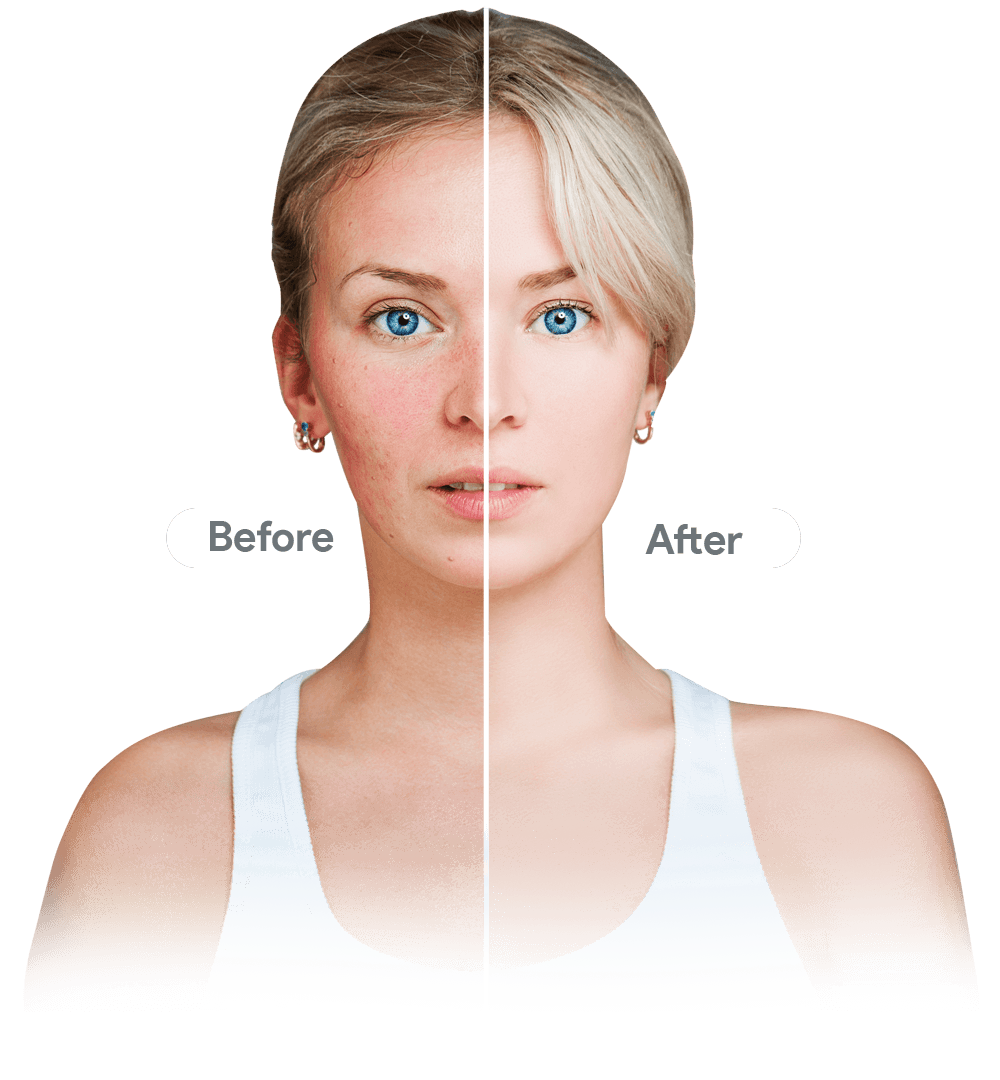
In recent years, there seems to be a surge in the desire to have suntanned skin year-long which has led to an increase in the use of indoor tanning beds. Unfortunately, many don’t realize that every time you step into that bed, you are increasing your risk of skin cancer. At DSA Dermatology in Plano, TX, we believe it’s important to help our patients understand the truth about tanning beds. In the following article, we’re highlighting some important facts about tanning.
- Tanning beds are not safer than the sun. In fact, just a single session in a tanning bed, booth, or sun lamp increases your chances of developing skin cancer (20 percent – melanoma, 67 percent – squamous cell carcinoma, and 29 percent basal cell carcinoma. The FDA requires warning labels on indoor tanning equipment stating their posed risks.
- Tanning ages your skin more quickly. Both outdoor sun tanning and indoor sun tanning can lead to visible signs of aging on the skin such as wrinkles, age spots, and skin laxity.
- Tanning beds can cause serious injuries – There is a potential for eye injuries, burns, and loss of consciousness every time you step into a bed.
- “Base tans” do not prevent sunburns – We’ve all heard someone say that they are using the tanning bed to get a base tan. This is a myth; you can still get a sunburn after having a tan. Furthermore, every tan or burn damages your skin and increases the risk of skin cancer.
- You can’t get the right amount of Vitamin D from tanning beds – The light used in tanning beds is primarily UVA light, however your body uses UVB light to produce Vitamin D. The safest way to get enough Vitamin D is to eat a healthy diet and talk to your doctor about a supplement if necessary.
- Becoming addicted to tanning is a real concern – There has been an increase in research that shows tanning can be an addictive obsession. According to the American Academy of Dermatology, up to 20 percent of white women between ages 18 and 30 who use indoor tanning beds show signs of addiction.
- Tanning can worsen the appearance of stretch marks – A better way to hide stretch marks is with the use of a self-tanner.
- Many tanning salons share misleading information – The U.S. House of Representatives Committee on Energy and Commerce ran a study that discovered much staff at tanning salons were telling customers that there are no health risks to tanning and that it even has health benefits.
- You can still look tan year-round with a self-tanner – Self-tanners are a wonderful way to get a sun-kissed bronze glow year-round without the risk. Furthermore, it will also prevent you from prematurely aging your skin and increasing your risk of skin cancer.
Some tips on applying self-tanner:
- Exfoliate first – This helps remove dead skin cells. Focus on areas of thick skin (ankles, elbows, knees).
- Dry your skin – Make sure your skin is dry to allow even application.
- Apply the product in sections – Use a circular motion to apply the product into skin.
- Wash hands between sections – This prevents orange hands. You can even purchase a self-tanner applicator mitt.
- Blend at your wrists and ankles – Spend extra time making sure these areas blend naturally to the feet and hands
- Allow your skin to dry – Wait 10-15 minutes before getting dressed and wear dark, loose-fitting clothing.
- Stopping (or never starting) indoor tanning could extend your life – Opting not to use tanning beds lowers your risk of skin cancer which can help you live longer.
It’s never too late to stop tanning and take a proactive approach to your skin health. By stopping now, you will allow your body to repair some of the damage caused by tanning and improve your overall skin health.
It’s also important to remember to wear sunscreen daily to protect your skin and schedule your yearly skin checks with DSA Dermatology. To book yours today, give us a call at (972) 362-9567.
Why Choose DSA Dermatology?
At DSA Dermatology, we bring to you the best of not one but three leading dermatologists in Plano TX,



At DSA Dermatology, we bring to you the best of not one but three leading dermatologists in Plano TX, Dr. Daniel S. Achtman, Dr. Carmine G. McConnell and Dr. Jordan. Achtman.
Dr. Achtman is a board-certified Dermatologist with over three decades of experience. Having graduated from the medical school of McMaster University, he also studied at the UTSW Medical Center in Dallas, TX where he also served as Chief Resident in the Department of Dermatology. In addition to possessing extensive training and experience in cosmetic enhancement techniques, Dr. Achtman is widely known as a leading expert in the diagnosis and treatment of various skin cancers. He is an active member of the American Society for Dermatologic Surgery. Dr. Achtman goes the extra mile to understand your medical concerns and to ensure that he helps you meet your unique aesthetic goals.
Dr. Carmine G. McConnell is a board-certified physician in Plano TX. Having been trained at McMaster University, Canada, she went on to earn her board certification in Texas. Having served as Chief of Staff of her department at Plano Medical Center, she has over two decades of experience in practicing medicine in her practice and while assisting Dr. Achtman in the practice of dermatology. In addition to her extensive postgraduate training in laser therapy and aesthetic surgery, among other procedures, she possesses vast experience in both cosmetic dermatological techniques and family medicine. As a conscientious and caring physician, Dr. McConnell provides her patients with customized non-surgical treatments to help address health and aesthetic concerns related to the skin. She is also keen on helping patients understand their skin and how it can be cared for and protected.
Dr. Jordan Achtman is a board-certified dermatologist in DSA Dermatology at Plano, TX. Dr. J. Achtman graduated from the University of Pennsylvania in Philadelphia and completed his residency in dermatology at UT Southwestern. His expertise spans general, surgical, and cosmetic dermatology. Dr. J. Achtman also has various special interests including chronic itch, infectious diseases of the skin, and the relationship between mental health and skin health. He is also very keen on helping patients form healthy skincare regimens and habits. In the hands of Dr. J. Achtman, you can be assured of innovative and cutting edge solutions for all your skin concerns.


